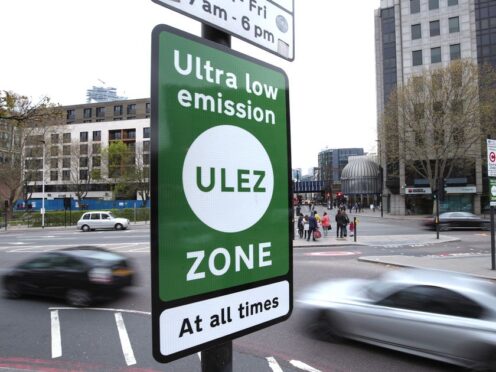Adverts for the expansion of London’s Ultra Low Emission Zone (Ulez) made misleading claims about pollution levels across the capital and inside cars, a watchdog has found.
The Advertising Standards Authority (ASA) said claims made by Transport for London (TfL), which runs Ulez, that levels of nitrogen dioxide (NO2) had reduced by almost half as a result of the scheme were not based on measurements of air quality taken before and after it was implemented, as listeners of the radio ad might expect.
Instead, TfL based its claim on calculating the difference between current air quality measurements and a “non-Ulez scenario”, but without qualifying this for listeners and likely misleading them, the ASA found.
The ASA also upheld complaints about claims in a second TfL ad that most deaths related to air pollution “actually” occurred in outer London, when this was in fact based on modelled estimates.
The ASA said the ad was likely to mislead listeners because it did not explain the basis of the claim.
In a separate ruling, the ASA found a claim made in a radio ad by the Greater London Authority that “according to research, one of the most polluted places in London is inside your car” was misleading.
The ASA said evidence provided by the GLA did establish that car users were exposed to air pollution when inside their vehicle and that it could be higher than when using other forms of transport.
However, the GLA had not directly compared pollution inside a car in London with other locations around the city, meaning it had not been adequately substantiated and was likely to mislead listeners.
The ASA, which received a total of 504 complaints about six TfL ads for Ulez and 38 complaints about the GLA ad – only some of which were upheld – stressed that it was not its role to rule on the validity of Ulez, but rather to assess whether claims made in the ads were presented alongside robust evidence.
The watchdog has told both TfL and the GLA to ensure that claims relate to relevant evidence more closely in future.
TfL said it was “disappointed” with the ASA’s ruling, adding that scientific analysis based on modelled scenarios and estimates was “standard practice” in the scientific community and central government.
A spokeswoman said: “The ASA did not challenge the science. Its ruling centres around a minor technical point in some ads. We will take this into account when drafting the wording and referencing in any future adverts.
“The science is absolutely clear about the significant harm of air pollution on people’s health and that estimated premature deaths from air pollution are higher in outer London than in inner London.
“It is also clear from robust scientific assessment that the central London Ulez was key to almost halving the nitrous oxide emissions in the original Ulez area.
“The expansion of the Ultra Low Emission Zone is playing a crucial role in the reduction of air pollution – improving air quality for everyone in London and reducing the harms to health associated with vehicle emissions.”
A spokesman for London Mayor Sadiq Khan said: “The ASA is not challenging the science behind the advertisement, and we are confident that it contains nothing misleading. The advert went through a robust policy and industry approval process.
“Studies from global institutions have shown that exposure to air pollution, even at low levels, is very damaging to people’s health. We are satisfied with the science behind the claim and how we presented it.”
